In winds up to 10 knots, the impact of shifts downwind is enormous… A boat working the shifts will gain 10% versus a boat that ignores the shifts.
Bill Gladstone, Performance Racing Tactics
Playing the shifts downwind is one part of your downwind strategy, along with sailing in more breeze and sailing in clear air. Many sailors are less vigilant about shifts downwind, because there are fewer of them and they’re harder to detect. In this post, we’ll check your understanding about the impact of shifts and how to use them.
SailZing reviewed dozens of sources for insights about playing shifts downwind. North U’s Performance Racing Tactics, Chapter 10, gives the most thorough explanations. Stuart Walker’s Advanced Racing Tactics and several other sources help put the role of shifts in perspective.
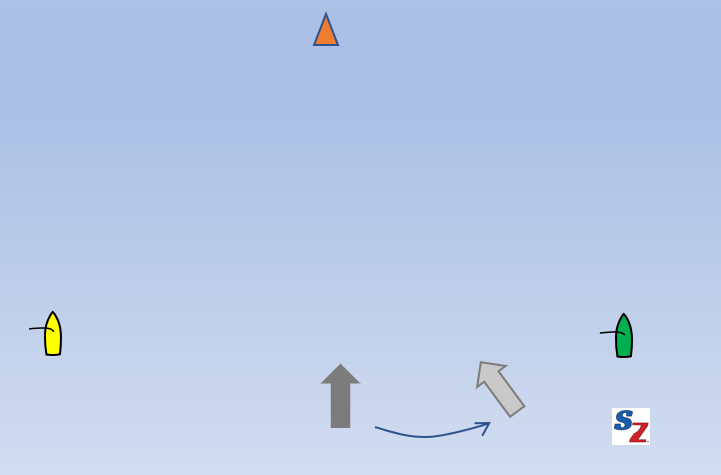
Quiz – Who Gains?
To start out, let’s check your understanding of the impact of shifts. In the situation shown, Yellow and Green are sailing dead downwind and are even. If the wind shifts to the left (looking upwind), which boat gains? Assume no change in wind strength.
To see the answer and explanation, click here.
Using Shifts Downwind vs. Upwind
If you got the right answer to the quiz, you probably understand how upwind and downwind shift strategies compare. Let’s make this explicit.
Oscillating Shifts
If the wind is oscillating, we reduce the distance sailed by staying in phase with the shifts. To stay in phase upwind, we get on the lifted tack and then tack when headed below the average wind direction. To stay in phase downwind, we get on the headed gybe and then gybe when lifted above the average. Always sailing the headed gybe lets us point closer to the mark while retaining speed.
Persistent Shift
If the wind is only going to shift in one direction, positioning is everything. Sailing upwind, if we suspect a persistent shift, we sail toward the expected shift. The boat closest to the shift gains the most. Downwind, we sail away from the persistent shift. In the scenario to the right, Yellow gains by sailing away from the shift.
Caution about Persistent Shifts
If a persistent shift also is an extended puff or area of more wind, don’t sail away from it downwind. You’ll likely gain more from the additional velocity than you would from the direction change.
Fewer Shifts Downwind
If you only see one or two shifts in a downwind leg, you can think of those more like persistent shifts. It doesn’t really matter if they are oscillating or persistent – the strategy is still to sail away from them.
In an oscillating breeze, you will see less frequent shifts on the downwind leg than on the upwind leg. This is because the shifts are moving down the course with you. In the animation, Yellow is sailing upwind and sees nine shifts. Green is sailing downwind and sees only three shifts. As the wind speed builds the difference between the number of upwind and downwind shifts decreases.
Detecting Shifts Downwind
When you’re sailing upwind in the groove, a shift has a noticeable effect – it forces you to head up or down to keep the boat moving. Not so with downwind shifts – the boat keeps moving, but perhaps a little less efficiently. So, you have to be more sensitive to shifts downwind to use them. You also have to be able to distinguish between a shift and a change in wind velocity.
Shroud telltales can help you monitor shifts, since they can show you both the strength and direction of the apparent wind. This will help you distinguish between shifts and velocity changes.
Here are some questions to test your thinking on apparent wind changes. Look at how the telltale rotates – either forward or aft, and how the telltale droop changes – either less or more. Then determine if this indicates a lift, header, puff, or lull.
Situation 1
The telltale rotates so the leading edge points more forward (solid line). The droop is unchanged or slightly less. Click on the drawing to enlarge it.
Is this is a lift, header, puff, or lull? What should you do?
Click here for the answer.
Situation 2
The telltale rotates so the leading edge points more forward (solid line). It also droops more. Click on the drawing to enlarge it.
Is this is a lift, header, puff, or lull? What should you do?
Click here for the answer.
Situation 3
The telltale rotates so the leading edge points more aft (solid line). It also droops less. Click on the drawing to enlarge it.
Is this is a lift, header, puff, or lull? What should you do?
Click here for the answer.
Situation 4
The telltale rotates so the leading edge points more aft (solid line). The droop is unchanged or slightly more. Click on the drawing to enlarge it.
Is this is a lift, header, puff, or lull? What should you do?
Click here for the answer.
When are Shifts Less Important?
You gain the most from playing the shifts light to medium air when the wind velocity is fairly steady. In puffy conditions, you gain more by finding the puffs and staying in them. In heavy air, the shifts are less frequent and you can normally sail toward the mark on one gybe. This is good, because you need to focus on waves and control. If the wind is really light, you gain more by playing the edges of the course to find wind.
Related Content:
Ladder Rungs: Understand the Race Course with a Visual Approach
Understanding Apparent Wind: Visual Resources
Downwind Sailing Using Yarn Telltales – SailZing Aha! Insights
Sail Faster Downwind: In Pressure and By the Lee
Sailors Helping Sailors
Will you share your knowledge with your related Comments below?

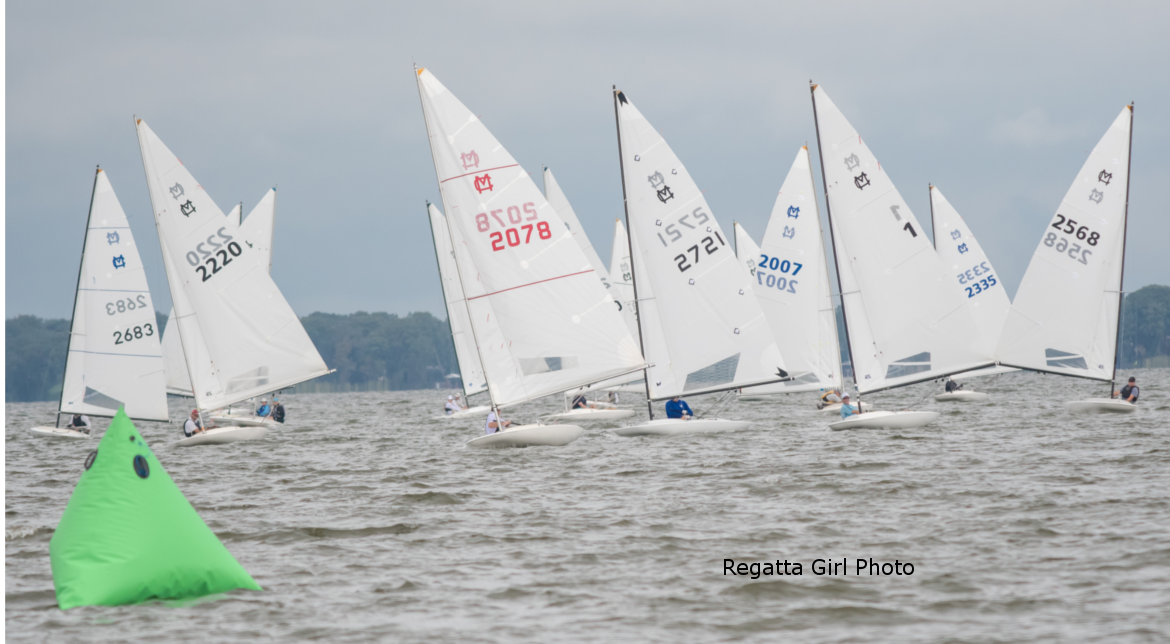
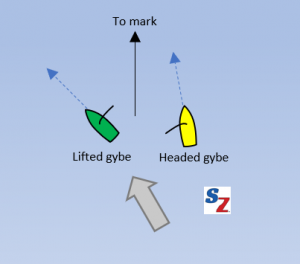
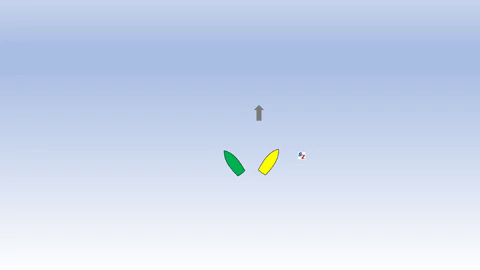
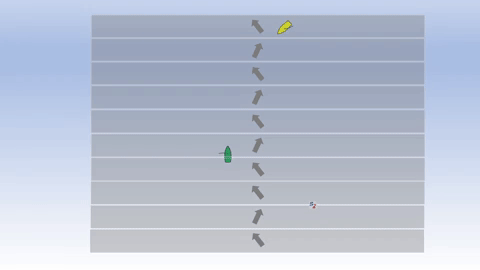
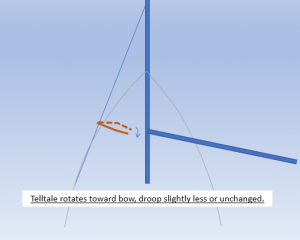
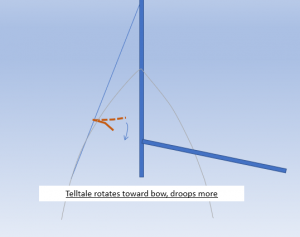
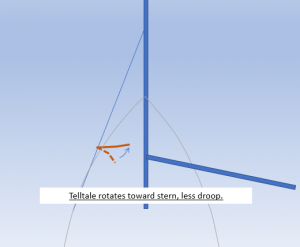
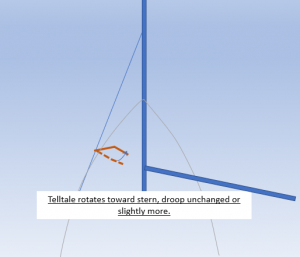
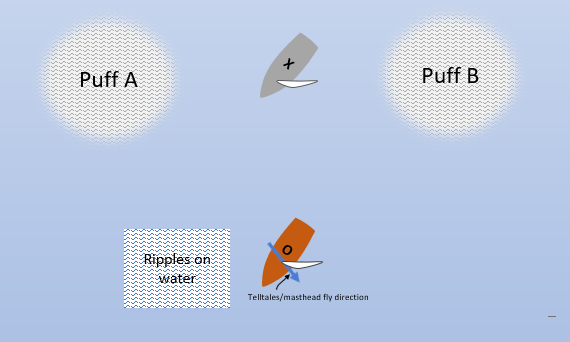

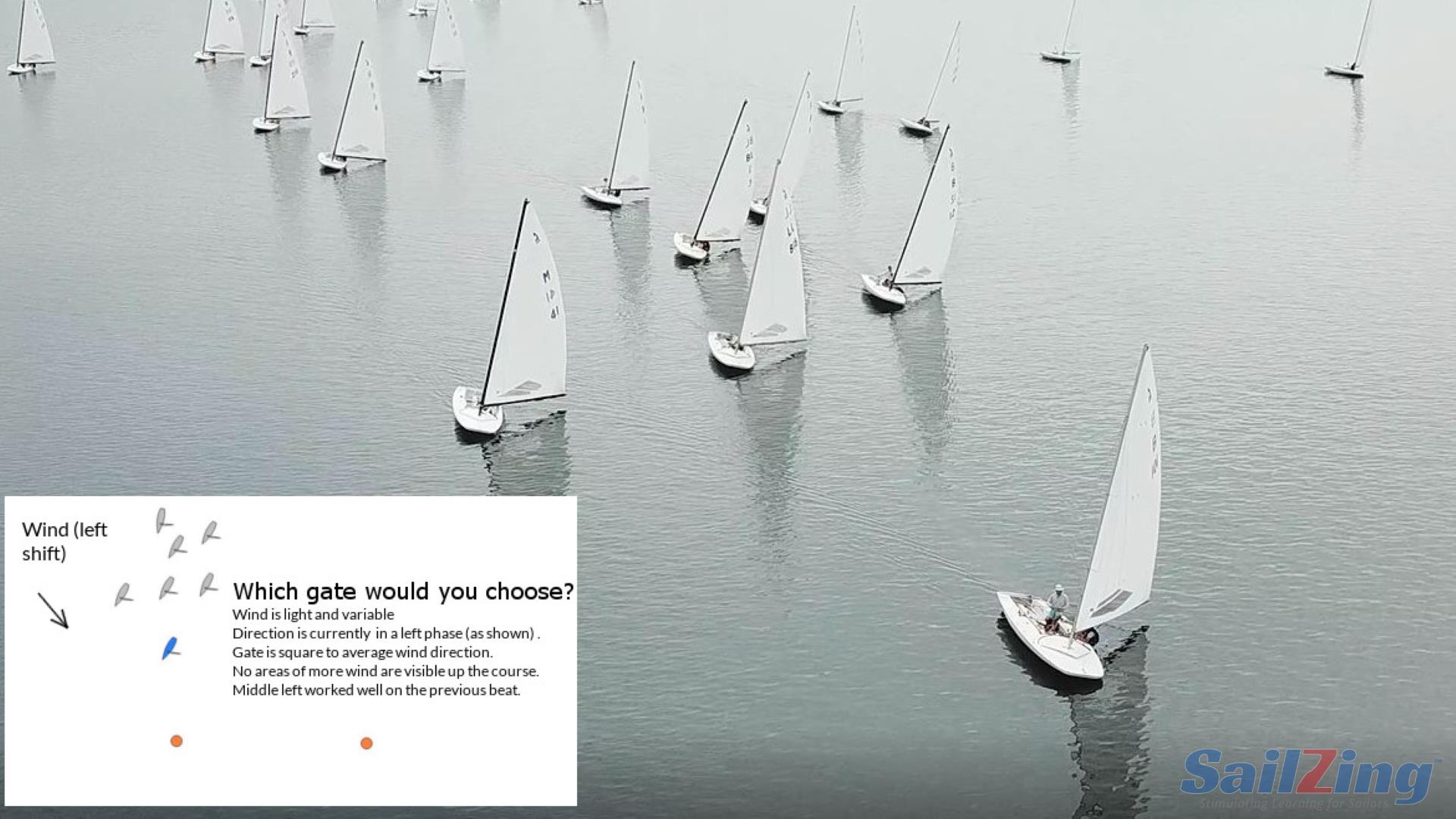

Pingback: Play the Shifts Downwind >> Scuttlebutt Sailing News
This article is derived from Bill Gladstone’s (that’s me…) book Performance Racing Tactics. Get the current edition direct from the author at:
https://northu.com/types/books-media/
Most of the ones on Amazon are used or previous edition at the same price….
Thanks!
Bill Gladstone
Thanks, Bill!
The link in the article also now goes to the North U source for Performance Racing Tactics.